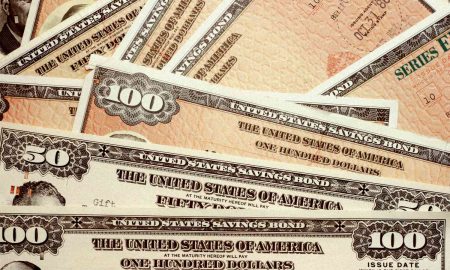
Are You a Freelancer? Here’s How You Should Plan Your Retirement

 The gig economy has been thriving across the US for several decades now. However, it is gaining popularity globally over the past few years. And the pandemic outbreak only made it possible for the whole world to go online and work as remote employees. We can’t deny that there are advantages to working from home as remote employees. However, the perks that a full-time employee enjoys even while working from home is in stark contrast with the life of a freelancer or a gig-based employee.
The gig economy has been thriving across the US for several decades now. However, it is gaining popularity globally over the past few years. And the pandemic outbreak only made it possible for the whole world to go online and work as remote employees. We can’t deny that there are advantages to working from home as remote employees. However, the perks that a full-time employee enjoys even while working from home is in stark contrast with the life of a freelancer or a gig-based employee.
One major differentiator is the way they go about retirement planning, the age at which they retire, and the retirement benefits. If you are a freelancer too and haven’t given retirement a thought yet here is an article that could be your ultimate guide to retirement plans that you could invest in to secure your future.
Remember that you are part of the 31% of the American adult population who work in a gig-based market, either full-time or as a side job. This means you are not alone, and hence, you have the support of the system and us to guide you through the process.
Individual Retirement Account (IRA)
 An individual retirement account or an IRA is a retirement plan that is ideal for freelancers, gig employees, and self-employed people. No matter where you are in the United States, there are financial institutions that provide a retirement savings plan with a tax savings advantage. If you are several decades away from your retirement, you could go for a Roth IRA, which lets you build more wealth through an accumulated investment plan.
An individual retirement account or an IRA is a retirement plan that is ideal for freelancers, gig employees, and self-employed people. No matter where you are in the United States, there are financial institutions that provide a retirement savings plan with a tax savings advantage. If you are several decades away from your retirement, you could go for a Roth IRA, which lets you build more wealth through an accumulated investment plan.
This plan is ideal for freelancers for the simple reason that you do not have to contribute huge sums of money to your retirement fund. Instead, you could contribute a little every month and save more than $6000 a year. When this adds up over the years, it gives you a massive fund to retire. Your financial advisor should be able to help you invest in such a way that you get a paycheck every month for your expenses even after you retire. Doesn’t that sound like a great and fun way to live?
Simplified Employee Pension Individual Retirement Arrangement
SEP-IRA or the Simplified Employee Pension Individual Retirement Arrangement is nothing but another type of Individual Retirement Account that is widely prevalent in the United States. This form of retirement savings plan is widely popular among small business owners and freelancers. Small business owners often use SEP-IRA to save for their retirement and that of their employees.
In this plan, every month a certain fixed amount of contributions is made into an IRA, which is set up individually for all the participants of the SEP-IRA. Anyone over the age of 21 years with around three to five years of work experience and having an income of over $600 during the financial year can sign up for this plan. The SEP-IRA has a tax-deferred growth, and you can let your money grow without having to pay taxes until you withdraw the money. And if you were to withdraw it before you turn 59 and a half years old, you will invite a penalty of 10% from the IRS, besides an income tax deduction.
Solo 401 (K)
 Well, the Solo-401(K) is very similar to the 401(K) plan that you are familiar with. In a regular 401(K) plan, you, as an employee, contribute a certain fixed amount of money every month to the plan, and your employee matches it. However, in Solo-401(K), as the name suggests, there is only one contributor, i.e., you. This is what makes it ideal for freelancers and self-employed people as they can save a significant amount of money by investing in a plan customized for them.
Well, the Solo-401(K) is very similar to the 401(K) plan that you are familiar with. In a regular 401(K) plan, you, as an employee, contribute a certain fixed amount of money every month to the plan, and your employee matches it. However, in Solo-401(K), as the name suggests, there is only one contributor, i.e., you. This is what makes it ideal for freelancers and self-employed people as they can save a significant amount of money by investing in a plan customized for them.
However, if you are working on freelance gigs apart from your job, a Solo-401(K) might not be ideal, more so if your full-time job offers you 401(K) cover. This is because moonlighters might be willing to contribute to two individual retirement plans, but the government makes it possible for a person to contribute only $19,000 as employee contributions and not more than $25000 as employee contributions, even if you combine both plans. The last thing you want is to push all your hard-earned money down the drain. So, read the fine print, check with your financial advisor, and pick this plan only if it is ideal for you.
Freelancers or gig employees need a retirement too. So, if you are a freelancer, we hope these retirement plans will provide you with the guidance you need to invest in a safe and secure future for yourself.
More in Business & Finance
-
`
Why 50-Year-Olds Are Looking for a Career Change
In today’s fast-paced and ever-evolving job market, it’s not uncommon to see individuals in their 50s embarking on new career paths....
November 20, 2023 -
`
Why Mortgage Demand Is Crashing as Interest Rates Skyrocket
Imagine having a favorite local ice cream shop that suddenly jacked up its prices by 50%. You would probably think twice...
November 18, 2023 -
`
Santo Spirits | Sammy Hagar and Guy Fieri’s Joint Venture
In the world of entrepreneurial partnerships, some unions are destined for greatness. The unexpected alliance between Sammy Hagar, the iconic Van...
November 12, 2023 -
`
Branded Content: A Genuine Way to Connect With Your Audience
Have you ever binge-watched a series on Netflix, only to later realize that the beverage everyone’s sipping on is that brand...
November 3, 2023 -
`
Southwest Airlines Tackles Passenger and Labor Challenges
Southwest Airlines, a prominent player in the aviation industry, has found itself at a crossroads, facing a combination of passenger dissatisfaction...
October 28, 2023 -
`
Everything You Need to Know About Blended Interest Rates
Hou ever blended a smoothie and thought, “How on Earth do my strawberries, spinach, and protein powder come together to taste...
October 17, 2023 -
`
The Osbournes ‘Relaunch’ Podcast After 5 Year Break
If you were glued to your TV in the early 2000s, there is no way you missed the hilarious, raucous, and...
October 10, 2023 -
`
Tesla in China: Back-to-Back Price Drops, But No Sales Jump?
As temperatures soared in the summer of 2023, Tesla seemed to be heating things up in the Chinese market too. A...
October 6, 2023 -
`
Navigating Red Flags in the Workplace
In the journey of our careers, it’s not uncommon to encounter red flags in our jobs that signal potential issues or...
September 30, 2023















You must be logged in to post a comment Login